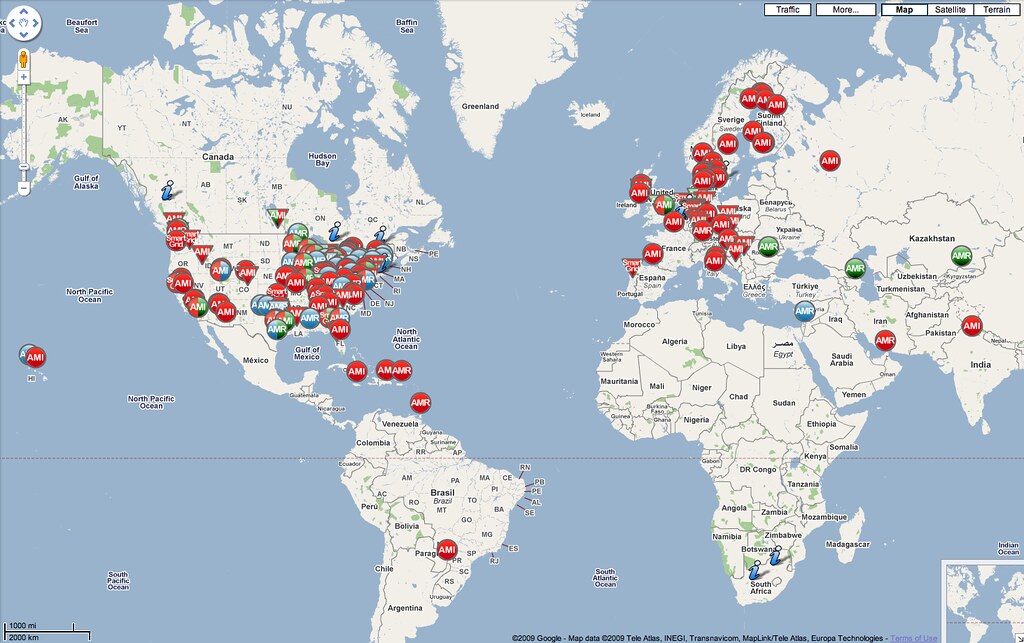
Photo credit Leo Reynolds
If you are not sure why open standards are important, you need to read this quote from the opening address of the The Southern African Telecommunications Networks and Applications Conference 2005, by then Minister of Science and Technology, Mosibudi Mangena:
The tsunami that devastated South Eastern Asian countries and the north-eastern parts of Africa, is perhaps the most graphic, albeit unfortunate, demonstration of the need for global collaboration, and open ICT standards. The incalculable loss of life and damage to property was exacerbated by the fact that responding agencies and non-governmental groups were unable to share information vital to the rescue effort. Each was using different data and document formats. Relief was slowed, and coordination complicated.
If the Internet weren’t built on open standards we might have found ourselves in a situation where you’d need an IBM browser to look at the IBM website, an HP browser to look at the HP site, a Microsoft browser to view the Microsoft site and so on. In fact it is the very openness of the standards on the internet which has led to its explosive growth and ubiquity.
Proprietary standards lead to vendor lock-in and to the crazy situation where if, for instance you buy a Sony digital camera, it typically uses Memory Stick cards that can be acquired only from Sony and a few select licensees, and this memory is typically much more expensive than alternative memory types available from multiple sources but which won’t work in Sony cameras.
In the Smart Grid space, standards are also extremely important. We need ensure that there is no vendor lock-in (i.e. if a utility has GE transformers, they need to be free to buy their smart meters from any smart meter vendor, not just GE, for example).
One of the most successful of the open standards has been TCP/IP, the protocol used for communicating data across a packet-switched network, like the Internet or almost all home or company networks. The next incarnation of TCP/IP is called IPv6. The advantage IPv6 has is that it allows far more items to be networked than is currently possible and that will be vital if we are to start networking the appliances in our house so they can participate in the Smart Grid. This is why companies like Cisco, who have no history in the energy space, are going to have a part to play in the roll-out of Smart Grids. Indeed Cisco have been talking up the importance of IPv6 for Smart Grids and creating ecosystems “to facilitate the adoption of Internet Protocol (IP)-based communications standards for smart grids.”
This explains why standards and interoperability are becoming really hot topics in the Smart Grid space at the minute. In fact that’s what the majority of the company announcements from last week’s Gridweek conference were about:
- Landis+Gyr, in cooperation with SAP, brings utilities closer to an interoperable Smart Grid
- Siemens, Silver Spring announce Smart Grid interoperability
- Trilliant, ABB partner to make Smart Grid technologies interoperable
- The Cisco Ecosystem announcement mentioned above and
- IBM launches software to standardize, accelerate smart grid startups
By far the most important announcement around Smart Grid standards though wasn’t from a company, it was from the National Institute of Standards and Technology (NIST). They presented for public comment a major new report on Smart Grid interoperability standards. That this document was launched by US Commerce Secretary Gary Locke should be an indication, not just of the importance of standards for Smart Grids but fortunately, just how important the Obama administration perceives them to be as well!
Cisco famously said that the Smart Grid space:
will be 100 or 1,000 times larger than the Internet. If you think about it, some homes have Internet access, but some don’t. Everyone has electricity access–all of those homes could potentially be connected
The only way Smart Grids will achieve that scale is if the standards required for that growth are drawn up and adopted.

